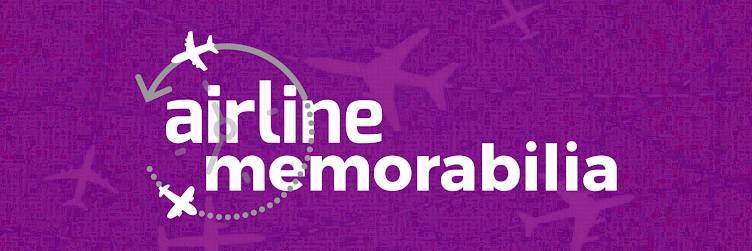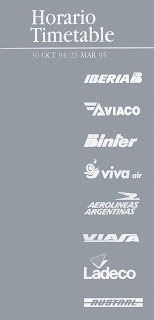- Cuatro marcas operando en España: la propia Iberia, ✈Aviaco, ✈Binter y ✈Viva Air. Esto, en teoría, no era una idea tan mala para la época y parecido a lo que también hizo, por ejemplo Air France o KLM u otras. En la práctica, estos grupos europeos que usaban varias marcas para distintos mercados, muchas veces con distintas estructuras de costes (vuelos regionales, vacacionales, etc) dieron más problemas que otra cosa a las diferentes matrices.
- Otras cuatro marcas en América Latina: de ellas, las principales eran ✈Aerolíneas Argentinas y ✈Viasa que proporcionaban, en teoría, una red global que llegaba hasta Australia, hacía al grupo líder absoluto entre Europa y América y le proporcionaba una red multihub con centros de tráfico en Madrid, Caracas, Buenos Aires y Miami (que había sustituido a una base anterior en Santo Domingo). Había que añadir, además, a la chilena Ladeco (en la que la participación era minoritaria y en la que Iberia siempre tuvo una relación bastante complicada con los otros socios) y la doméstica argentina Austral. En esta época de mayor esplendor del grupo había incluso una operación regional en Argentina, similar a Binter, que operaba con código AU y el nombre Inter Austral con aviones CN-235
En la práctica, Iberia se encontró con compañías con una gestión anterior ruinosa y que no fue capaz de enderezar (mientras que desde el continente americano se le acusa todavía de cerrar la compañía venezolana y casi conseguir lo mismo con la argentina), que operaban con flotas muy poco eficientes y obsoletas (especialmente cierto en el caso de Viasa) y que nunca llegaron a integrarse de modo eficaz en la estructura del Grupo.
✈✈✈ ✈✈✈ ✈✈✈ ✈✈✈ ✈✈✈ ✈✈✈ ✈✈✈ ✈✈✈ ✈✈✈
This timetable from the mid 90's show what the Iberia Group was at its peak. You can also have a look at two previous examples from 1991 and 1992 I published here before. The Iberia Group was a somewhat haphazard business enterprise which included:
- Four different airline brands operating from Spain: Iberia itself, plus ✈Aviaco, ✈Binter and ✈Viva Air. This was roughly the same that other European airlines such as KLM or Air France were doing and it was not such a bad idea at the time. It turned out, however, that having several specialized airlines working together while taking care of different target groups (charter/leisure flights, regional network, etc) was more of a nightmare than anything else for the different airline groups.
- Yet another four different airlines in Latin America. ✈Aerolineas Argentinas and ✈Viasa were supposed to be the crown jevels. Two strong airline brands which, in theory, would mean that the group would span accross five continents, and the group would beat any other airline on European-Latin America connections. This was a multihub intercontinental network with its main hubs being Madrid, Miami, Buenos Aires and Caracas (there had been a previous hub in Santo Domingo which was no longer the main gateway to Central America and the Caribbean)
The Group included, as well, the Argentinean domestic carrier Austral (There was also a short lived Binter-like operation using CN-235 planes that flew under the Inter Austral name) and the Chilean Ladeco. Iberia had a minor stake of the shares on this airline and it had a rather difficult relationship with the rest of shareowners.
This all sounded pretty good but it turned out pretty bad: the American counterparts are still blaming Iberia of the Viasa demisal and both the Spanish carrier and Aerolineas Argentinas were very close to bankrupcy. The group never really worked and it was a strange mix of different airlines, ageing fleets, strange routings and little or none schedule coordination.






























































